Raspberry - familiar for our latitudinal berry culture, without which there is not a single household territory or cottage. Therefore, gardeners are very responsible and scrupulously approached to the issue of selection of planting material.
Raspberry Patricia has long established itself as a worthy and proven grads.
Delicious major fruits that do not appear and for a long time retain the form, winter-hard-resistant and drought-resistant plants, resistance to a row of diseases and high yields - not all the advantages of the "Patricia" variety.
How to independently grow raspberry "Patricia" and, what care to provide a shrub? - Read in this selection of material.
Malina Patricia, description of the variety
Malina Patricia variety was led in the 80s last century by the breeder from the city of Moscow V.V. Kichina. The variety was created as a result of crossing such raspberries such as: M-102 and Mareosika. Ten years later, the obtained hybrid of the raspberry appeared in his free sale, and quickly won the horticultural market of the whole country. This species attracted the attention of not only amateur gardeners and dacities, but also large industrial farms involved in breeding berries for commercial purposes. Such popularity is explained by a number of positive qualities and the advantages of this useful culture.
- Malina Patricia is a large-scale high-yielding culture, resistant to a number of diseases and pests.
- Externally, the raspberry bush is straight, high and not too empty, in height reaches about 1.5-1.8 m.
- Stems without spikes, slightly publisted. Semi Owned shoots have brown painting.
- Large leaves, with jar, pubescent. Young, only blooming foliage, is distinguished by a darker, carmine tint, mature leaves - rich dark green color. As a rule, the leaves are collected by 5 pieces.
- Extended fruit shoots are formed from the middle of the bush to the top of the top, carry 15-20 berries.
- The fruction of raspberries occurs once for the season: from June to August, i.e. The variety is not removable. The average raspberry yield rate is about 5 kg from one adult shrub (older than 3 years of age). Some gardeners note the possibility of obtaining even 10 kg from the bush.
- One of the main advantages of culture is its berries: cone-shaped, brightly raspberry, large (7-15 g), with dessert taste and pleasant aroma. Taste sweet with slightly pronounced acid. In addition, the fruits are velvety to the touch, with a soft juicy flesh and a small amount of hard seed.
- Ripe berries for a long time are held on the branches, keeping the form and density, which allows you to collect a harvest for several techniques.
- Raspberry Berries Patricia are used both in latest form and processed: for the preparation of sweet desserts, jams, jams, compotes, etc.
- Malina is an older drug, with which he treated colds. Scientists have confirmed the antipyretic and coating effect of the fruits and leaves of the raspberry.
- Culture is distinguished by increased abandon and winter hardiness, at which it easily tolerates frost to -30 0C. At lower temperatures, the bush needs
Advantages and disadvantages of raspberry patricia
To summarize all of the above, briefly denote the main advantages and possible shortcomings of the grade of Rasina Patricia.
Advantages:
- Pleasant aroma and good taste of berries, regarding experts in 4.6 points on a 5-point scale;
- Large fruits that do not appear long;
- Increased frost resistance of the plant;
- High yields not removable raspberry variety;
- A minor number of seeds in the fruits;
- The density and compactness of the berries makes it easy to collect and the ability to store for a while;
- Resistance to a number of diseases (necrosis, spottedness, anthrosphere, etc.) and pests (TEL);
- Sophisticated shoots facilitating harvesting;
- Good transportation of berries;
- Compactness is not sprawling shrub.
Disadvantages:
- Raw growth of high shrubs (including and pins), requiring regular trimming and rods;
- The complexity of harvesting, taking into account the height of an adult shrub;
- Increased sensitivity to excessive humidity, which provokes mass rotting of berries;
- Susceptibility to the phytoofer;
- Low transportability;
- The possibility of aging the berries of the wrong forked form;
- Large berries seeds;
- Litted non-collected berries cause rotting, which may affect the neighboring raspberry plants.
It is important to take into account that most of the declared deficiencies of culture is a consequence of the improper care or the influence of adverse environmental conditions.
Raspberry Patricia, reviews
In our country, as in most other CIS countries, Malina Patricia variety is widely known and distributed. First of all, gardeners note the magnificent taste qualities of large-scale raspberries, which gives rich yields and does not require special cultivation conditions.
- In specialized forums or sites, you can find many real reviews from people engaged in the cultivation of this berry culture. It is there that often meet such characteristics as the "delicious fragrant berry", "the best grade", "silent raspberry," huge raspberry berries ". This raspberry grade is impressive with its appearance, excellent dessert taste and unassumature in care.
- Involve, some daches rank grade to remote species. Such confusion is associated with a long period of fruction of raspberry Patricia, which is a large half of summer.
- This grade raspberry is also attractive thanks to the absence of prickly spikes, which greatly facilitates and simplifies the harvest collection of delicious raspberry berries.
- Many "fans" of varieties characterize the fruits of the plant as an excellent market product that allows for a long time to maintain a form and an attractive appearance. Berries are easily separated from the flowers and are transported for short distances.
Raspberry Patricia, where to buy?
Malina Patricia Saplings can be purchased in garden shops, nurseries and exhibitions and sales. The proven and proven "Internet sales" are also popular among consumers of varietal planting material. Buying seedlings in the elemental market, the risks of acquiring poor-quality material are large: it can be a completely different grade of raspberries or seedlings infected with any disease.
Buying raspberry seedlings, it is important to pay attention to the appearance of a young plant and a number of essential characteristics:
- The plant must be without signs of damage or disease, strong, elastic, with cut up to 20-30 cm, shoots.
- Segments of shoots without spots and enclosures.
- The most important thing for the successful rooting of the seedling is a healthy and well-developed root system.
- Roots should not be overwhelmed, easily rolled. The main root is branched (with a multitude of small roots), not chopped, flexible.
- Availability at the foundation of escape of at least 3 kidney replacement (or already developing young shoots).
- If there is a need for storage of a seedling - open roots wrap in a wet fabric, after which the plant is placed in a cool place. In this form, seedlings can be stored about 1-2 days.
Malina Patricia, landing rules
Given that raspberries grow in one place for many years (15-20 years), it is important to initially choose the most suitable place for perennial. Naturally, when choosing a plot, you should be guided, first of all, the preferences of this berry culture.
Location and time landing raspberry patricia
- Raspberry seedlings plant in the open soil in spring or autumn. In the harsh northern regions, preference is given to the spring, since the autumn landing often entails the freezing of a young rapid seedling. In the southern regions with a temperate climate, it is advisable to carry out the autumn landing (in October), which allows the plant to strengthen over the winter and in the spring is actively "to go into growth."
- Tall and fast-growing raspberry variety Patricia prefers sunny, open and spacious sections. At the same time, the shoots did not fall and do not break, it is better to avoid windy (from the northern side or on an elevation) of the area. In the shadow, Raspberry almost stops fruit.
- It is not suitable for planting raspberry bushes is also a wet or congestive place where an elevated level of soil moisture is observed. This also applies to sections with high groundwater. Excessive overvailing provokes root rotting and, as a result, the death of the entire plant.
- The soil for landing raspberries must meet the main characteristics, allowing to achieve maximum shrub development and, respectively, fruiting. The soil must be loose, breathable and fertile. The best option for growing raspberries will be driving, sandy or black earth soils with neutral acidity. In the dense clay ground, raspberries, unfortunately, will not be able to grow properly, since such a structure is characterized by constant moisture stagnation. On sandy soil, the plant dries quickly, as the sand is not able to delay moisture.
- As for the plants of the "neighbors" or "predecessors", cultures imposed by the attack of common pests and diseases should be avoided: tomatoes, potatoes or strawberries (strawberries). Raspberries on the site of the gooseberry, currant or rowan are best developed.
Agrotechnik landing raspberry patricia
- Landing raspberries precedes the early preparation of the site. For example, with the planned spring landing, the Earth is better prepared from the fall. To do this, the selected area is drunk, remove all weeds and fertilize. As fertilizers are used both organic (manure) and mineral complexes (superphosphates, potash fertilizers).
- If the landing is carried out without prior preparation of the site, fertilizers are added directly to each landing pit. To do this, use humid, dung-raw, wood ash or compost.
- So that the seedlings are better and faster able to root in a new place, before planting them it is better to withstand several hours in water. It is also better to cut all the side root processes. In the case of planting a seedlings with the presence of an earthen coma (for example, in transplantation), the land can not devoured, trying to preserve it as much as possible when landing for a new place. Such plants are faster at a new place.
- The sizes of landing pits depend on the size of the roots of the raspberry and on average range 40 x 40 cm. For group landings, long furrows can also be prepared. I dug my hole, the humus and thin layer of the Earth are poured onto the bottom. After that, on a small earthy hall, the seedlock of the raspberry is exposed, rolling the roots and, slumbering the ground, completely fall asleep. During the landing, the soil periodically compacted.
- After landing, there is a small rigorous well for further watering plants. Immediately after landing for watering, the raspberries will need about 10-12 liters of water. After the water has absorbed, the rolling circle is mounted with sawdust, straw or chip.
- Given the definite degree of expanding the ruin of the raspberry Patricia, it is necessary to plant seedlings, while maintaining, at least 50-70 cm of the interval between instances. The distance in the aisle should be 2 times more.
Malina Patricia, care features
Raspberry Patricia needs irrigation, pruning, feeding and preventive measures aimed at preventing infection with diseases.
In addition to such familiar agrotechnical events, so that Malina does not "crawl" throughout the plot, artificial "limiters" for the growing root row can be installed under the ground. It can be covered slate sheets, old iron or tin barrels that are directly planted raspberry seedlings.
Watering and loosening Raspberry Patricia
- Raspberry Patricia variety is a moisture culture requiring regular abundant irrigation. However, excessive overvailing is fraught with reinforcement roots and berries, therefore it is important to regulate the rate of irrigation depending on the needs of the plant.
- Soil moisturizing directly affects the yield of culture. The lack of moisture negatively affects berries: they are minced and dried.
- A good watering should moisten the soil about a depth of 30-50 cm. Watering the plant is better in the morning or in the evening, under the root. It is not necessary to get involved in sprinkling the crown of the shrub, as this may entail the development of fungal diseases.
- During the flowering and ripening of the berries, the irrigation rate is slightly increased. In the fall, on the contrary - reduce. It is important that autumn raspberries continue to obtain a sufficient amount of moisture, because during this period, the growth of growth kidneys for the next year.
- In hot dry weather, the raspberry bushes are inferred to protect the plant and its fruits from the drying.
- After watering (if not zamulchirovat portion) performed soil loosening. The procedure was carried out carefully and shallow so as not to injure the surface roots raspberry.
- Periodically, the raspberry bushes weed the weeds that hinder the development of perennial.
- Mulching area to avoid procedures such as hoeing and weeding. Mulch also retains the long humid microclimate soil after watering. As mulch suitable sawdust, straw, grass clippings.
Crop and garter Patricia raspberries
- Given the fact that the raspberries Patricia - tall variety, often it needs to be tied. Long runner tie to the horizontal wire (trellis) stretched between the supports. By the trellis tied up not only the stalks, but the heavy hand with berries. For use garter soft twine or thin strips of fabric.
- Pruning of shoots - an important and necessary agricultural practices care raspberry.
- At the beginning of the season, in early spring, conduct sanitary pruning. At the same time remove all the dry, broken or damaged shoots a raspberry.
- In the second half of spring, all the young shoots of raspberry shortened by approximately 5 leaves. At the beginning of the summer, all the shoots pruned again, leaving a length of about 1 m. These procedures allow to stimulate the development of new shoots, and thus fruit brushes.
- At the end of the harvest, cut all otplodonosivshie (lignified) shoots under the root.
- In autumn raspberry bushes thinned out, leaving a 5-6 most developed annual shoots.
- Patricia Malina, as well as other varieties of raspberries, active forms root shoots. To avoid uncontrolled reproduction berries, shoots regularly (in spring and autumn) to remove (spade or shears). You can not force pulling growth, as this can damage the main root of the plant.
Patricia fertilizing raspberries
- Raspberries require periodic fertilization, which has a positive effect on crop yield and appearance of the plant. Lack of nutrients inhibits the development of the bush, berries ripen irregularly, slightly deformed shape.
- For berry feeding culture using mineral or organic fertilizer. Mineral complexes particularly useful phosphate and nitrogen products. However, high doses can not be carried away by the nitrogen because it is fraught with the accumulation of harmful nitrates in raspberries.
- From the most popular organic fertilizers, such as peat, humus, wood ash or "nutritious" infusion of mullein (1:10), bird droppings (1:20), weeds (1: 5).
- As for the number of feeders carried out, it is enough to spend 2-3 manipulations for the season. When using natural, organic fertilizers, the number of similar manipulations can be enlarged.
- The first feeding is carried out in spring, before the start of active vegetative development, when the kidney is just beginning to swell and the leaves bloom. At this time, you can use an ammonium nitrate or other nitrogen fertilizer.
- The second feeding is carried out before flowering. Organic fertilizers or a mixture of superphosphate and potassium sulfate are used.
- The last stage of fertilizer's fertilizer falls on autumn, after the collection period of the entire harvest. The same complexes are used as during the bootonization (second feeding).
Fighting diseases and pests of Rasina Patricia
- Malina Patricia's grade is resistant to many typical Malnique diseases: anthracnose, Botritis, Didimella. At the same time, the perennial is very susceptible to the phytoofluoride and needs constant prevention.
- When the gray spots or deposits on raspberry leaves and berries, the affected parts are cut and burned, and the plant itself is treated with antifungal chemicals. Excellent results are obtained by spraying the Bordeaux liquid solution of urea nitrafenom et al. Remedies.
- Waterlogging of soil, stagnant water or prolonged rainfall can cause the most dangerous disease for the variety - "late blight". The fungus Phytophthora provokes the development of rot from the roots to the shoots. As a rule, after infection, the fabric begin to die, and the raspberry bush dies, so it is important to dig and destroy all parts of the patient plant, and the soil is treated with any antibacterial drugs.
- From pests, on raspberries there is parasitizing such insects, like: weevils, kidnew mole, raspberry bugs, stem gallitsa, gray flies and white cicada. But for such common pests as aphids, the plant is stable.
- Insecticidal preparations, type "carbofos", "phytodeter", "Alarllik", and others are used in the fight against parasites.
- As a prevention so that raspberries suffered as much as possible from diseases and pests, in the fall, it is necessary to drain the plot, collect and fill the fallen foliage (cropped dry shoots), cut forward the bushes and remove weeds. It is periodically important to inspect the bushes for "unwanted guests" in order to take measures to protect Malinnik on time.
Preparation for winter raspberry Patricia.
- Patricia brings great frost to frost -30-35 0Since, therefore, in most regions, the plant in the winter does not harbor.
- In the case of lower temperatures, with strong north winds, icing and insignificant snowpack, raspberry runner bends and harbor any material (spruce branches, agrovoloknom, roofing material).
- The plot on winter raspberry recommended zamulchirovat sawdust, hay or fallen leaves of trees. A layer of mulch -. Approximately 15 cm thus possible to prevent winterkilling roots plants and bushes protect from sudden changes in temperature.
Thus, raspberry varietal "Patricia" is deservedly considered one of the most popular and common among gardeners, raspberry varieties. High-yield, large-fruited and hardy crop cultivated in the garden, cottage or garden plot, as well as in large-scale farms or horticultural organizations.

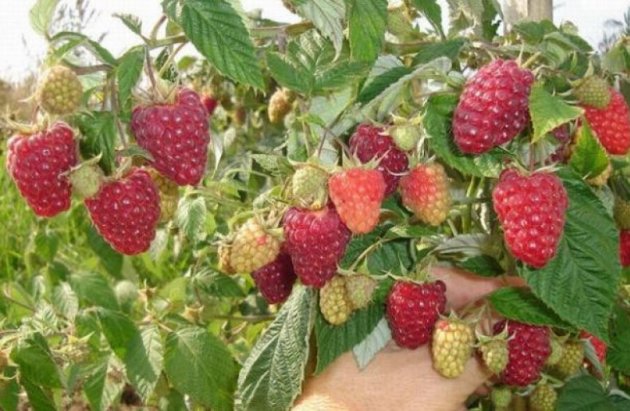



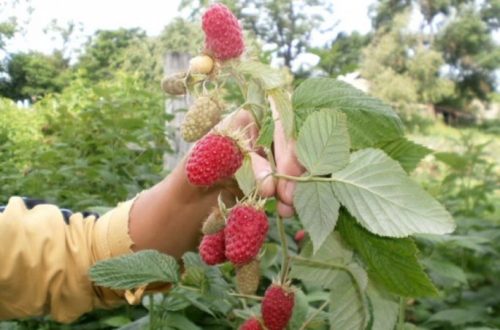

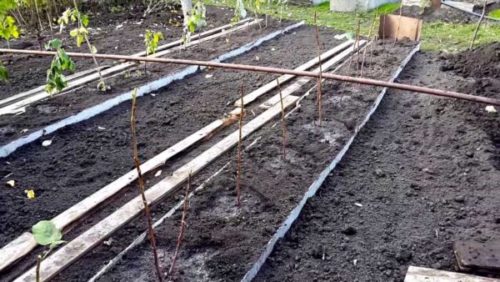
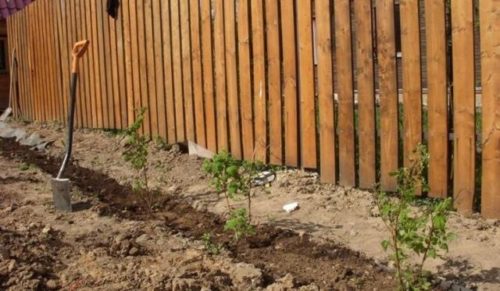


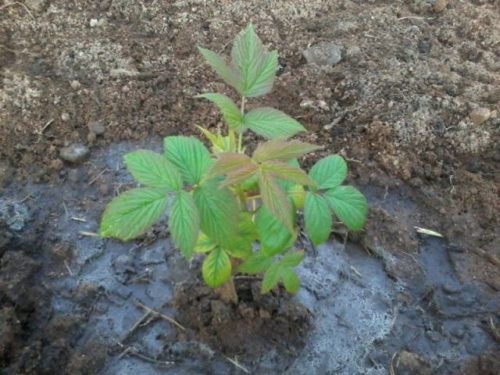


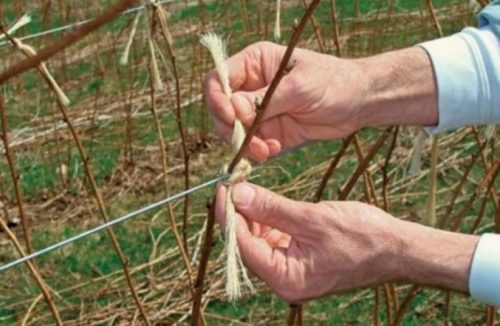


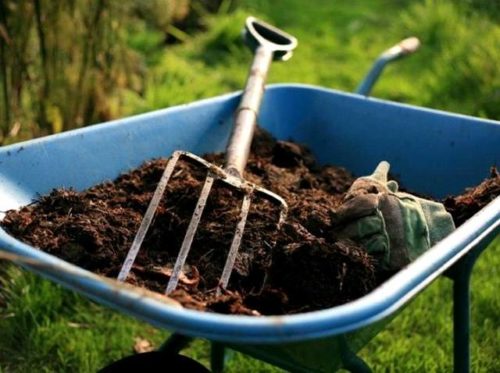

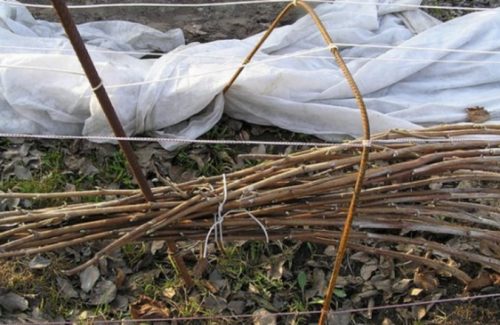

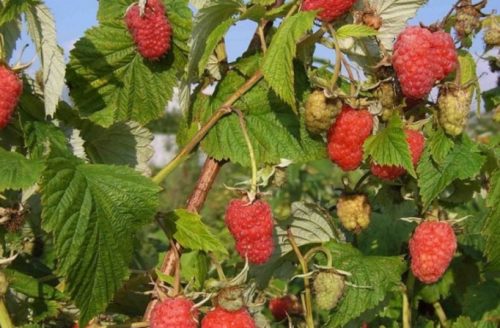
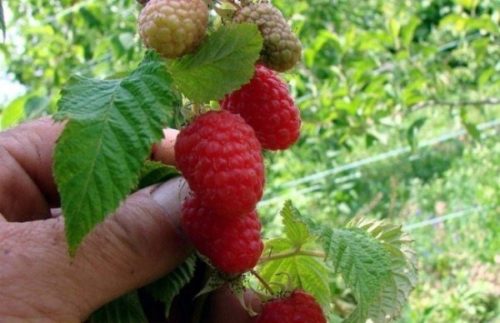
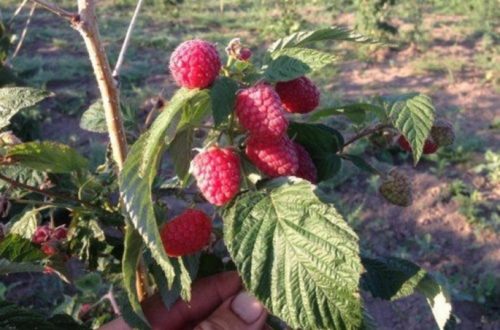
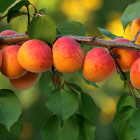











 Start a discussion ...
Start a discussion ...